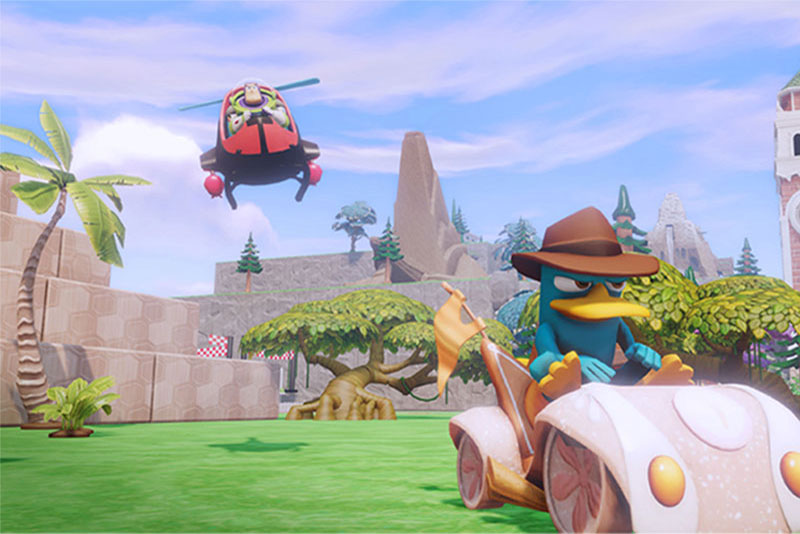The secret to Disney Infinity’s success – and longevity – may not be exclusively found in the toy aisle, but in the clouds. With Activision’s Skylanders video game franchise surpassing US$1 billion at retail, and customizable online games like Minecraft moving past 11 million downloads, the House of Mouse, has been, well, all ears.
On August 18, Disney is set to release its largest gaming initiative to date, aptly named Infinity, which offers an open-ended play model that allows users to interact with Disney and Pixar characters within video games that are compatible with more than 30 collectible physical pieces. And while the product is expected to be pitted against Skylanders and a growing list of competitors on the toy front, Infinity’s cloud-powered user-generated content (UGC) element is directly targeting an increasingly social demographic that not only wants to play, but share.
Housed within Infinity’s Toy Box Mode, which allows kids to engage in customizable play using a large catalogue of Disney characters and settings, will be the ability to upload user’s own game creations directly to Disney using cloud software. In this space, kids will then be able browse through other Toy Box creations submitted by players from around the world. Disney intends to feature roughly 10 user-generated Toy Box games every week within the console game itself to be selected by an in-house staff of around 75 people. (Since the console game is connected online, it gets updated weekly). Interestingly, the games will be console agnostic, meaning that even if a chosen game was made by a player on an Xbox, it could be played by another gamer using a Sony PS3, for example.
“Mimicking playground play is the key here. For us, our mindset is with games like Minecraft, where you see this incredible community that feeds into kids’ imaginations and desires to want to outdo each other,” says Ryan Rothenberger, a senior producer for Infinity and a lead architect of the game’s UGC element, which is accessible via Xbox 360, Playstation 3 and Wii U, and will be available online a few months following the console game’s release.
Rothenberger says the UGC element is there to give new – and constant – life to the Disney Infinity console element. “With Toy Box, it’s limitless content. If we didn’t have a vehicle that allowed sharing, Infinity’s impact would be minimized and the lifespan short-lived.”
Further prolonging Infinity’s life cycle are game-building tools that kids and budding game designers, as young as seven, can use to design real games filled with self-appointed villains, point structures and backdrops. Once kids wave their magic wands, their own versions become playable and are set to their own rules.
And while online open-ended play models like Minecraft are direct competitors, Rothenberger says Infinity is carving out its own niche. For one, the game is targeted at the console market (Minecraft started out as a PC game and then moved into consoles and mobile), but it’s also looking to bridge the gap between the console and PC market by allowing seamless play between the two. The upcoming PC version of Toy Box Mode will essentially use the same system as the console, so kids can play online and then pick up where they left off on their console devices.
“Kids can build a Toy Box game on a PC laptop on the go, save it to their private UGC account, and then when they get home to their Xbox 360, they can boot it up and finish playing,” says Rothenberger. He adds that mobile plans are also in the works for Infinity, but more details will not be released until later this month.
“Skylanders doesn’t have anything like this as far as user-generated-content is concerned,” he says. “This has nothing to do with toys.”






















